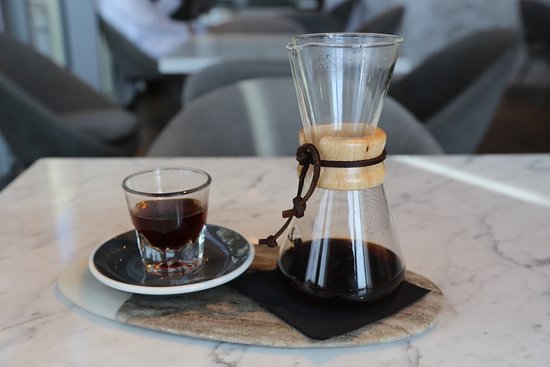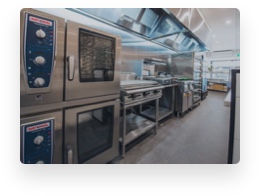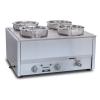How to Use a Coffee Plunger

Related categories: commercial coffee machines brands, 2 group espresso machine, commercial coffee grinder
One of the great pluses about learning how to use a coffee plunger correctly is that it will give you the chance to make coffee just the way you like it. Indeed, many of the details from the all-important coffee to water ratio to the coarseness of the coffee grounds themselves depend on personal preference. Of course, there are some rules you should stick to. But, even still, the heart of the matter remains unchanged. Using a coffee plunger is a great way to tailor your morning cup of joe to your own tastes.
Step 1: Put The Kettle On
Obviously enough, the first step on the road to brewing a great cup of coffee involves putting the kettle on. However, before you do so, take a second to figure out just how much water you actually need. As a rough guide, 250ml more or less equates to a single cup-sized serving. In actual fact, for reasons that will soon become clear, you should boil more water than you actually need.
Step 2: Weigh and Grind the Coffee Beans
The ideal coffee to water ratio isn’t set in stone. It can vary according to the coarseness of the grounds, the strength of the coffee itself, and even the mineral make-up of the water you’re using. However, let’s say that you opt for a ratio of 60g/L. That’ll mean that for every cup-sized serving (250ml) you intend to make, you should add 15g of coffee.
Bear in mind that you should hold off grinding your coffee until the very last second. This ensures that the coffee will be as fresh and, therefore, as delicious as possible.
Step 3: Preheat The Beaker
Remember that additional water you added to the kettle. Well, here is where it comes into play. Once the kettle has come to the boil, you should pour some of the excess boiling water into your plunger’s beaker. This acts to preheat the beaker and, as a result, to stabilize the brewing temperature.
Step 4: Let The Water Cool
Resist the temptation to simply dump the boiling water straight into your plunger. Unless that is, you actually enjoy scalded coffee. To avoid such debasement, you should allow the water cool to about 93/199℉. Admittedly, a thermometer comes in handy here. However, if you don’t have one to hand, a good rule of thumb is to let the water cool for 1-2 minutes.
Step 5: Add The Coffee Grounds
Before adding your coffee grounds, remember to first discard the beaker-heating water. Once the beaker is empty, you’re free to add your coffee grounds.
Step 6: Set a Timer and Weigh Plunger
When it comes to coffee, timing is everything. You see, if the extraction period is too short, the coffee will be sour and acidic. On the other hand, if it’s too long, the coffee will be bitter. As such, it really pays to time your coffee’s extraction with a degree of precision. Typically, you should allow your coffee to extract for 4 minutes.
Precision also pays with respect to the amount of water you add. To get it right, place your plunger on a zeroed scale and add the appropriate amount of water. All the while, keeping in mind that 1mL of water weighs 1g.
Step 7: Coffee Blooming
In theory, blooming refers to the process of moistening coffee to encourage the release of carbon dioxide. In practice, however, the blooming effect is produced by adding a little water, maybe 2-3 times the mass of coffee you’re making, to the coffee grounds and then stirring. You’ll be able to recognize the blooming effect by the fact that your brew will begin to foam.
Step 8: Add the Remainder of the Water
Again don’t simply dump the water into your plunger. Opt instead for a more methodical approach. By slowing things down, more of the water will come into contact with more of the coffee grounds. Or, to put it another way, you’ll enhance flavor development.
Step 9: Stir Periodically
Stir the brew every minute or so. Moreover, to best encourage a full extraction, do so using an up and down motion. Avoid stirring too vigorously, however, as this will only result in over-extraction. Small details such as this really make all the difference when learning how to use a coffee plunger correctly.
Step 10: Plunge and Serve
Once your timer hits 4 minutes, it’s time to plunge the coffee. When plunging, be mindful not to compact the grounds at the bottom of the beaker. This, in fact, is a bit of a no-no. You see, overly compressing the grounds will only cause them to release a bitter taste. And you don’t want that, do you?
For similar reasons, you should serve or decant your coffee immediately after plunging. This is down to the fact that the plunger does a less than perfect job of separating the water from the grounds. Leaving the brew to sit can, therefore, lead to over-extraction and produce a bitter taste.
Now, all that’s left is to sit back, relax, and enjoy a perfectly brewed cup of coffee.
Are you looking to open a new coffee shop? Read about our coffee shop design and fitouts. Here are related commercial kitchen equipment for your coffee shop: commercial deep fryers & stainless steel shelves.









